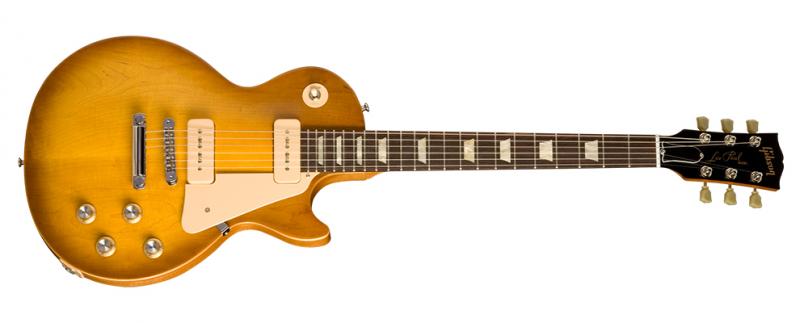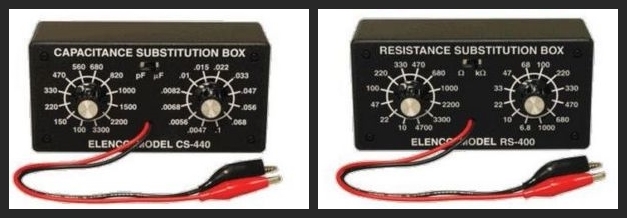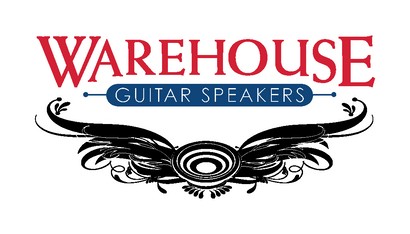Your Cart is Empty
NOW FREE SHIPPING TO 48 CONTIGUOUS UNITED STATES ON ALL ORDERS!!!
Of P90 Pickups, Les Pauls, and Treble-Bleed Circuit mods
by vaughn skow December 22, 2015 7 min read

Howdy friends! Here is PART of the story of my long journey to develop truly holy-grail level P90 pickups … the part about treble bleed circuits! Now, most treble-bleed circuit discussions fall into one of three general camps: 1) what values to use, 2) Parallel vs series wiring of the cap & resistor, and 3) how pleasant the treble content is as you roll-down the volume control. My discussion is a bit different, as it primarily is about P90 equiped guitars, I DO NOT recomend treble-bleeds on already spikey single-coil guitars ESPECIALLY Telecasters! And, this blog is mostly about the resultant sound with the volume controls all the way up ... yes, this mod DOES affect the tone of the guitar even BEFORE you start rolling down the volume! The story is kinda long, skip towards the end for the results without the lead-up story.
Several years’ back I bought a used Gibson 60’s tribute P90 equipped Les Paul.
I INSTANTLY realized that these P90s sounded spectacular, easily the best P90 tone I had ever encountered. And so, I chose this guitar to be the “standard” for my own P90 R&D. What made the tone of these P90s so different was … well … everything. The bridge pickup just felt SOLID, weather bell-like clean tones on classic Tele stuff like the Folsom Prison signature lick or Jazzmaster-ish surf licks … and right up to heavy Marshall Crunch and AC/DC licks … the bridge tone was always impeccable. The neck tone was maybe not quite as spectacular, but still my personal favorite P90 neck tone ever. P90s in the neck can tend to get a bit too “woofy” (or muddy if you prefer), especially with a good bit of gain added. This particular guitar had absolutely NO muddiness at all in the neck position, and practically nailed SRV neck tone. However, I did find myself longing for just a little bit of the signature P90 neck woof … and the combined tone (middle position) was both a bit sterile and boring, and with no RW/RP accommodations, it also buzzed even worse than either pickup on its own. But STILL … overall, the best sounding dual P90 guitar I’ve ever heard! So, the question was: why? Are ya ready for the answer?
So, here is where this story gets interesting.
For two years I had been making P90 prototypes and NONE sounded as excellent as the previously mentioned Les Paul 60’s Tribute. Early on I took a peek at the pickups in this guitar during a string-change, and found them to be the stock Gibson models (which by the way looked quite nicely made). So, I bought ANOTHER guitar just like the first to try my pickups in for a direct apples-to-apples shootout, and guess what, the “new” one, stock, didn’t sound nearly as good as the first one. What was going on here? That’s when it hit me: I hadn’t even peeked in the control cavity of the first “magical” Les Paul. So I did, and I got quite a surprise!
First, holy cow was it a clean job … and second, it was most certainly NOT factory wiring.
Here is what I discovered:

- It had been converted to “50’s Les-Paul style”, a long-time favorite of mine in dual-humbucker Les Pauls.
- The Pots looked to be original, and were all 500K.
- The tone caps were after-market, the Russian paper in oil type that are popular on eBay, with a value of .033uf … right in-between my recommended .1uf for single-coils and .022uf for humbuckers.
- There was a “treble-bleed” circuit added on each pickup! What?
My God, why hadn’t I peeked in hear earlier? Quite an over-sight on my part! So, I opened my new guitar up and found it’s wiring to be stock … and … miserable. By comparison, it was downright ugly. I wish I would have taken a picture … but I guess it’s better to let that horror live on only in my own memory.
Here’s what I found in the “new Les Paul:
- It followed a wiring scheme I’d never before seen in a Les Paul (but later found was standard in this model) with a microscopic .022uf cap wired in a most un-Gibson like manner.
- The pots all speced out well within tolerances, and looked original, albeit they were covered in way more solder than was necessary.
- There was no treble-bleed.
- Obviously, it was NOT 50’s-style.
- There were remnants of what looked like aluminum tape cavity shielding which had mostly been removed.
A-ha! Now it was clear why my P90 designs were always falling short of my “standard bearer” guitar … even though I wound pickups to the exact same specs, with the exact same ingredients, and with pole gauss numbers at the same readings!
So, I re-wired the “new” Les Paul to 50’s style, added in orange-drop .022 tone caps (I did not have any .033uf caps on-hand), and began to play with different values of treble-bleed cap/resistor networks.
Yes … we’ve FINALLY reached the real subject of this blog!

The “standard bearer” first guitar had a treble-bleed circuit consisting of a 470 pico-farad capacitor and a 220K resistor in parallel on both pickups. I experimented with a number of values, and here is what I ended up going with on Les Paul number two … with my vintage-wound P90s installed (which spec almost exactly the same as in the “standard bearer”).
Here are the treble-bleed values I went with on the "new" Les Paul:
- I wound up with a 680pf value cap on the bridge, which moved the effected frequency range a TINY bit more down into the natural range of a P90, but went with a 100K resistor, which allowed more un-effected signal (lows)to pass.
- On the Neck, I went with 500pf (essentially the same value as the standard-bearer”), but again, I moved the value of the resistor to allow for more un-effected low-frequency content to pass. This time I went with a slightly more common value of 150K.
The result:
My ‘new” Les-Paul 60’s tribute now sounds BETTER in every way than the original “standard bearer”. The Bridge sounds exactly the same as my holy-grail P90. The neck sounds better; it still avoids being too “muddy” … but DOES allow for just the right amount of P90-ish woof, which was missing in the original. And, possibly best of all, with both pickups on the tone is spectacular! Complex, rewarding, and simply inspiring … and due to employing RW/RP on the pair, it’s also dead-quiet and buzz-free! As a note, as I roll back the volume controls, the tone remains nearly unchanged (that's why most folks install treble bleed circuits), and the taper of the pots are actually MORE to my liking ... more gentle over the travel of the pot. All in all, I accomplished everything I set out to do. Below are some notes on treble-bleed circuits you might want to take into consideration:
Cap Values in parallel-circuit Treble bleed mods:
- Without an associated resistor, the cap is simply a high-end boost … think of it as a “bright” switch … that boosts more and more top-end as the volume control is rolled-down. For a while Telecasters employed this (eeek!!), and most Ibanez guitars still do!
- All these passive components interact with each other, so there is not necessarily any magic-value that works for everyone … as the value of the pots (as actually measured), pickup specs, length and quality of cable, etc. all factor in.
- Common values are between 250picofarad and 2000pf (.00025uf to .002uf)
- As the cap value increases, the frequency shifts downward to affect MORE frequencies … which is often stated as “gives more treble boost”.
- On the bottom end, 250pf is very gentle, boosting only a bit of the upper-most frequencies of a guitar pickup.
- On the top end, a 2000pf cap boosts a BUNCH of the top-end of a guitar, without a resistor, this will make even the darkest of pickups downright shrill!
Resistor values in parallel-circuit Treble bleed mods:
- AGAIN: All these passive components interact with each other, so there is not necessarily any magic-value that works for everyone … as the value of the pots (as actually measured), pickup specs, length and quality of cable, etc. all factor in.
- Common values are between 100K and 500K with MOST falling between 150K to 300K. Some folks recomend going with 1/2 the value of the volume pot is will be attached to, which is not a bad starting point.
- A low-value resistor of say 100K will bypass the cap the most, and will allow the largest amount of unaffected (low) frequencies to pass … ie: it will lessen the amount of top-boost.
- A high-value resistor of say 300K or more will allow fewer unaffected (low) frequencies to pass… ie: it will greaten the amount of top-boost (think of no resistor at all as the ultimate high-value resistor, and a dead-short wire as the ultimate low-value).
- The lower the value of the resistor, the more it will change the taper (behavior) of your volume control. With the 100K resistor I used on the treble-bleed of my bridge pickup, it made the volume control feel quite smooth from “10” down to about “1”, and then it fell off quite abruptly; which I actually prefer over the way it was, where the dramatic fall-off began much earlier on the pot. You may feel differently, if you are a pinky volume-rider … you may find this longer taper isn’t to your liking.
So there ya go! Now, go out and experiment for yourselves. The clip-on mod circuit the good folks at Stew-Mac advocate is a great idea if you don’t want to do any soldering on your guitar until you’re sure you have it right! You can even find inexpensive capacitor/resistance boxes cheaply on eBay ... which makes the experimentation VERY easy!

Leave a comment
Comments will be approved before showing up.
